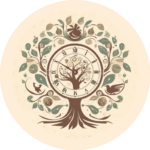“Rub this on your skin, get a lover.” That’s not clickbait. It’s a sixteenth-century recipe, written in all seriousness by the Italian natural philosopher Giambattista Della Porta. He recorded the formula for an ointment, said to be used by witches. The claim was that it could induce an extraordinary phenomenon: it would make the witch believe she was flying and it would culminate in an encounter with an ardent lover – or several. Here is how Della Porta describes what happens after it is applied. I quote from my own translation:
“They [the witches] believe they fly through the air on gibbous moon nights, they see banquets, music, parties and mate with good-looking young men, who they crave ardently.”
That’s from Magia naturalis, first published in 1558. A book that sits somewhere between herbal compendium, alchemical handbook, natural philosophy, magic and “Things That Will Definitely Get You Excommunicated”. The infamous ointment wasn’t just rumoured. It was recorded, tested, and yes, and allegedly even witnessed — with ingredients like bat blood, poplar leaves, and, most infamously, children’s fat. But what was really happening here? Was this a genuine magical formula? An aphrodisiac, or a medical misunderstanding? Or an early form of psychedelic chemistry? Don’t worry — we’ll get to the full recipe in just a moment. And yes, it’s somehow even worse than you think.


CHAPTER 1 – The Forbidden Recipe
The chapter of Magia naturalis that caused all this trouble — Chapter XXVI, for those keeping score — bore the title: How to induce clear and pleasant dreams, as well as frightening and obscure ones. It is here that we find the recipe for what Della Porta himself calls the witches’ ointment. He provides two versions, and neither will be going into your next skincare routine.
The first begins, quite casually:
“They [the witches] boil children’s fat in a bronze receptacle and skim off the layer which floats on the water…”
And we’re off to a strong start. He goes on:
“…they set what remains after evaporation, let it settle again and keep it to use it when necessary. Into this they mix apiaceae, aconite, poplar leaves, and soot.”
The second version swaps out some of the ingredients, including a few that modern toxicologists might describe as “deeply inadvisable”:
“Water parsnips, common yellow iris, potentilla, bat blood, solanum which makes you sleep, and oil.”
Solanum, by the way, likely refers to solanum nigrum, or black nightshade — a plant known for producing hallucinations, vomiting, and, in sufficiently generous doses, death. Once the concoction was ready, these women were said to rub it all over their bodies — but not before first warming the skin through vigorous friction. Della Porta writes:
“They grease themselves with fat or, in its place, with oil, so that the strength of these juices penetrates on the inside and is strong and more effective…”
In other words, heat opens the pores; open pores absorb the ointment. A very hands-on approach to transdermal delivery. And the result?
“They [the witches] believe they fly through the air on gibbous moon nights, they see banquets, music, parties and mate with good-looking young men, who they crave ardently.”
Now, Della Porta insists he didn’t just hear about this. He claims to have witnessed a woman, a witch, apply the ointment – through gaps on a door, naturally. A group of men (himself included) observed her undress, anoint herself, and promptly fall into a deep sleep. The men entered the room and tried to wake her up from her stupor. She didn’t respond to shouts, shaking, or even what he describes — with breathtaking nonchalance — as “beatings.” When the woman finally awoke, she recounted her vivid journey, which included flying and participating in these orgies. The men insisted she hadn’t moved or left the room, but she didn’t believe them.
Now, this was very likely a made up story, yet both the tale and the recipe are very telling. So what’s Della Porta’s takeaway? His conclusion was radical for the time. This story could prove that, arguably, there was no such thing as witchcraft. He argued there were no orgies with devils and no true witches’ sabbath involved here. These were just hallucinations, and the effect came from the hidden powers within the plants themselves. Della Porta calls this a “wonder of nature.” Which is rather polite, considering the ingredients – but it was a way for Renaissance people to describe magic: the manipulation of nature to achieve wondrous effects. For Della Porta, this wasn’t an aside – it was evidence: that the boundary between delusion and nature could be studied, described, and, if one dared, replicated. He was going into dangerous territory.
CHAPTER 2 – The Chemistry of a “Lover”
So, we’ve got women rubbing themselves with poisonous herbs, flying through the sky, and dreaming of sexual banquets, at least in theory. Naturally, this raised some questions. How did early modern thinkers explain this? To answer that, we need to dip briefly – and I promise, painlessly – into humoral theory. The basic idea was that the body contained four fluids: blood, phlegm, yellow bile, and black bile. Health meant balance. Illness meant imbalance. And emotional states? Also connected to humours. Desire, melancholy, anger – all rooted in bodily fluids.
Della Porta argued that the ointment worked by heating the body and opening the pores. This made the flesh, in his words, “relaxed” and “permeable.” The “virtue” of the plants – their hidden powers – could then penetrate the skin and affect the inner workings of the body. What he’s really describing, in modern terms, is a physiological response leading to an altered mental state. The rubbing, the heat, the bodily openness – the entire procedure is practically choreographed. And Della Porta leans into it. He doesn’t just mention the dreams; he specifies they involve music, dancing, and mating with beautiful young men “craved ardently” by the witches. This reads less like demonology and more like erotica disguised as pharmacology.



And the ingredients back him up. Aconite, for instance, was known in polite circles as the Queen of Poisons. Solanum nigrum – black nightshade – which can induce delirium, stupor, and what physicians refer to as “auditory phenomena.” Henbane, often included in related recipes, produces a blend of hallucinations and total muscular collapse. These plants contain tropane alkaloids – powerful compounds that interfere with the body’s neurotransmitters. Today we call this “anticholinergic toxicity.” It creates a state of delirium where hallucinations feel entirely real. Back then, they called it flying to a witches’ sabbath. Perspective is everything.
And as for dosage? That was apparently a matter of intuition. No spoonfuls, no scales — just vigorous application until something happened. Ideally not death. And, as Paracelsus noted, the difference between medicine and poison is often a matter of dosage. It’s the dose of the substance that matters, as the effects produced can be completely different.
But the significance of these hallucinations went even deeper. It tapped into a long-standing discourse about the so-called “secrets of women” – knowledge concerning fertility, conception, and female sexuality. The ointment clearly borrowed some of this imagery, but twisted its purpose. Its focus wasn’t on reproduction, but on transformation – of body, of mind, and of experience – without the oversight of men, medicine, or the Church. It’s no coincidence that there’s some overlap between this formula and aphrodisiacs in the same period.
The image of a naked woman getting high and having erotic dreams made it radical, though. It suggested women could induce altered states, fantasies, even ecstasy, without a partner – beyond the control of husbands, physicians, or priests. The ointment made the body receptive – not to a man, but to an experience far harder to regulate. And that made people profoundly uneasy. Especially the ones writing the laws. And the demonology books.
CHAPTER 3 – From Recipe to Heresy: Censorship, Scepticism, and Religion
If you’re thinking, “Surely this caused problems,” you’re absolutely right. This is the time of the Reformation, and of the witch-craze. People were being accused and convicted of witchcraft, and humanists and scholars were debating these subjects in all seriousness. The stakes were high, and nothing invites ecclesiastical scrutiny quite like a recipe involving women using bat blood, children’s fat, and altered states of consciousness that no one could quite explain — or control.
Enter Johann Weyer; physician, sceptic, and all-around killjoy for witch-hunters. In his De praestigiis daemonum (1563), Weyer used Della Porta’s ointment as evidence that witches weren’t flying, summoning, or fornicating with demons. They were deluded, ill, or high. Possibly all three. Flying sabbaths and dream-sex with demons? Not supernatural. Just symptoms. This idea aligned closely with what Della Porta was saying in his book. But this sceptical take infuriated the authorities.
If you’re still with me, and not off concocting your own dangerous herbal salves, good. Because now things get politically explosive. Jean Bodin was a legal theorist, demonologist, and apocalypse enthusiast, and he took Weyer’s arguments personally. In La Démonomanie des sorciers (1580), he not only condemned scepticism, but singled out Della Porta by name. He accused him of promoting heresy by daring to suggest that magic might be natural. (Again, Della Porta’s whole point with his book Magia Naturalis was that – as the name suggests – natural magic was the manipulation of nature to achieve marvellous effects.) But this wasn’t just a disagreement. It was an indictment.
And by then Inquisition was paying close attention to Della Porta. The difference between “natural” magic and demonic or black magic was blurry at best, and in two occasions Della Porta was brought before the Inquisition to explain himself.By then, he had essentially become a celebrity (albeit a controversial one), and his works were being translated in many European languages.
The Latin edition of Magia naturalis was placed on the Spanish Index of Prohibited Books in 1583. The Italian edition survived just, largely because the translator, with the weary precision of someone keen to keep his head, quietly cut the offending recipe (and several othe problematic ones, like I mentioned in my previous video about faking virginity). You can sense the translator’s anxiety as he assured the reader:
“so as not to enflame the curiosity of the impious… we shall silence these compositions.”
A polite way of saying: I’ve removed the bit about the witches’ ointment – along with poisons etc. Please don’t arrest me. Meanwhile, the broader context wasn’t improving. Across Europe, witch trials were escalating. The Constitutio Criminalis Carolina (1532), the Holy Roman Empire’s legal code, had helpfully standardised procedures for interrogations – including exactly how, and how often, one could be tortured. Bureaucracy is a wonderful thing.
In this climate, Della Porta’s natural explanations weren’t just bold; they were subversive. If witches’ experiences could be caused by ointments, not demons, then the entire legal system built on confessions, pacts, and spectral evidence began to wobble. Worse still, the ointment didn’t just mimic flight. It mimicked transformation – of perception, of sensation, of the body’s relationship to authority. A woman alone in a room, experiencing vivid realities no one else could authorise? That was destabilising. Not because she felt pleasure, but because she did so on her own terms.
And so the ointment found itself condemned by both sides: zealots, who saw it as diabolical, and sceptics, who dismissed it as nonsense. Della Porta, inconvenient as ever, suggested it was neither, but something far more radical: a wonder of nature. Natural, empirically observable, and terrifyingly hard to regulate.
CONCLUSION – Hallucinations, Heroines, and Historical Hangovers
So what are we left with? A jar of ointment. A handful of hallucinogenic herbs. A woman, asleep on the floor, dreaming she’s airborne and adored. And a furious backlash; from theologians, censors, and legal authorities who couldn’t agree what she was, but very much agreed she needed explaining. And the same went for the author of the book. Della Porta didn’t just describe a salve. He described a mechanism: a way of understanding dreams, altered states, even belief itself, as phenomena grounded in the natural world. Not witchcraft. Not heresy. Just empiricism, and suggestion, and heat.
Perhaps that was the real danger: not what women felt, but what those feelings suggested about the porous boundary between body and mind. If trance, ecstasy, even flight could be natural, then perhaps magic wasn’t supernatural at all. Perhaps it was just… misunderstood. Like the witch’s porous body being susceptible to this formula, the line between what we now see as science and magic was just as blurry and porous in the past, too. And while the flying ointment recipe no longer circulated after the whole debacle, the discomfort it provoked lingered – especially when it comes to knowledge that resists easy control, or bodies that don’t conform to the official story.
The history of witchcraft is a gigantic and absolutely fascinating topic, and I’ve only scratched the surface here with this one recipe, but hopefully this text can make you question established narratives. Who should have access to knowledge, whose experiences are valid, who gets to tell the story and – when there is a witch hunt – who gets burnt at the stake? Those are all important questions we should keep in mind.
If you enjoyed this text and you want to help me keep creating history videos and texts like this, there’s a Patreon link below — every bit of support lets me dive deeper into the archives and share the strangest stories history has to offer. Thank you, and see you next time.
References
Laura Balbiani, La Magia Naturalis di G. B. Della Porta (1999).
Giambattista Della Porta, Magiae naturalis, sive de miraculis rerum naturalium (1558).
______________, De i miracoli et maravigliosi effetti da la natura prodotti (1560).
______________, Magiae naturalis, sive de miraculis rerum naturalium (1589).
______________, Natural Magick (1658).
______________, Magie Naturelle (1581).
______________, Des vortrefflichen Herrn Johann Baptista Portae von Neapolis Magia Naturalis, Oder: Hauß-, Kunst- und Wunder-Buch (1680).
______________, De i miracoli et maravigliosi effetti da la natura prodotti (1677).
William Eamon, Science and the Secrets of Nature (1994).
______________, Natural Magic and Utopia in the Cinquecento: Campanella, the Della Porta circle, and the Revolt of Calabria, Memorie Dominicane (26), 1995.
Rudolf Hirsch, The Printed Word: Its Impact and Diffusion (1978).
Maurizio Torrini (ed.), Giovan Battista Della Porta nell’Europa del suo tempo (1990).
Brian Levack, The Witch-Hunt in Early Modern Europe (2006)
______________, The Oxford Handbook of Witchcraft in Early Modern Europe and Colonial America (2013)
Lyndal Roper, The Witch in the Western Imagination (2012)





